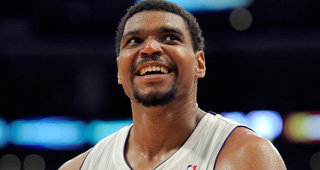After being on the wrong side of a Game 1 blowout, Kobe Bryant quickly dismissed the notion that the lack of rest his Lakers had after a full seven-game series had nothing to do with the loss.
To paraphrase, Bryant argued that no amount of rest would change the fact that the Thunder are faster and more athletic. While Kobe’s understanding of Oklahoma City’s biggest advantage over his squad is a positive, it wont count for anything unless he allows the Lakers to harness their biggest strength and advantage: their size.
The fact that the Lakers finished with the third seed in the Western Conference, and are in the second round is a testament to how good Bryant remains. He has been so dominant for so long that it almost seems ludicrous to argue that the offense should not run through him. However, the 33-year-old Bryant needs to accept that he is no longer the unanimous best option on offense.
Although Bryant has shown a slight decline, the reason that the Lakers are a more dangerous basketball team when they operate through Andrew Bynum and Pau Gasol in the post has less to do with Bryant, and more to do with the rest of the league and the fact teams are generally less equipped to deal with a pair of offensively gifted seven-footers than they are a perimeter scorer of Bryant’s stature.
Specific to their series against the Thunder, the combination of Bynum and Gasol, both players who shot over 50% from the field during the regular season have a bigger advantage against any combination of Kendrick Perkins, Serge Ibaka, Nick Collison and Nazr Mohammed than Bryant does on Thabo Sefalosha, James Harden and Kevin Durant.
It is important to note that in order for the Lakers to exploit their advantages at their frontcourt positions, they need to make them a priority and utilize them as their primary point of attack. What this means is, instead of giving the ball to Gasol at the three-point line and trying to find an entry pass to for a Bryant post-up on his defender, Gasol should be the one getting the ball in the paint.
It means that a few missed shots should not deter the Lakers from feeding their big men. It means taking out a page of Lionel Hollins’ playbook, circa 2011 playoffs vs. the Spurs.
Their optimal game plan should be simple but effective: establish the inside game through Bynum and Gasol, make the defense react, then get the perimeter guys, including Bryant more involved with the easier looks that will undoubtedly follow.
Don’t let Ibaka’s highlight blocks on Gasol in Game 1 mislead you. Despite being the active weak side shot blocker that he is, Ibaka’s main weakness as a defender is his on-ball defense in the paint. With Gasol handling the ball form 20+ feet out, Ibaka is able to use his athleticism to make up ground, and challenge or even block his drives. If Gasol is allowed to do what he does best, operating from the block, look for Ibaka to not only struggle with Gasol’s diverse offensive arsenal, but also to get into foul trouble.
Gasol’s inside finesse game is almost a perfect compliment to Bynum’s dominance in the paint. Arguably the most skilled offensive center since Shaquille O’Neal, with the right amount of touches, Bynum is able to impose his will on virtually any center in the league. The only Thunder player who’s physical attributes even come close to matching Bynum is Perkins, who gives up two inches and 10 pounds, is far less skilled and is nursing a nagging hip injury.


